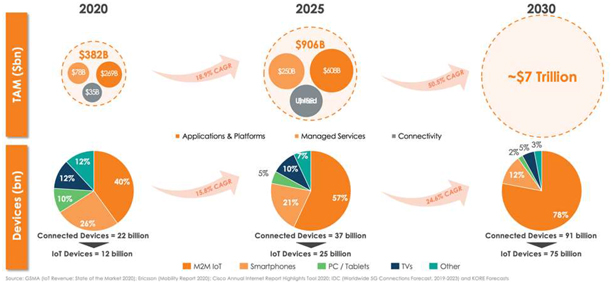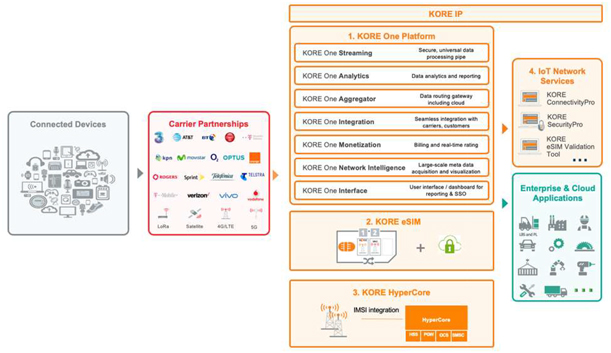Our products are highly technical and may contain undetected errors, product defects, security vulnerabilities,
or software errors.
Our products and solutions, including our software products, are highly technical and complex and, when deployed, may contain errors,
defects, or security vulnerabilities including but not limited to vulnerabilities resulting from the use of third-party hardware and software. We must develop our products quickly to keep pace with the rapidly changing market, and we have a history
of frequently introducing new products. Products and services as sophisticated as ours could contain undetected errors or defects, especially when first introduced or when new models or versions are released. Such occurrences could result in damage
to our reputation, lost revenue, diverted development resources, increased customer service and support costs, warranty claims, and litigation.
We warrant that our
products will be free of defect for various periods of time, depending on the product. In addition, certain of our contracts include epidemic failure clauses. If invoked, these clauses may entitle the customer to return or obtain credits for
products and inventory, or to cancel outstanding purchase orders even if the products themselves are not defective.
Errors, viruses, or bugs may be present in
software or hardware that we acquire or license from third parties and incorporate into our products or in third party software or hardware that our customers use in conjunction with our products. Our customers’ proprietary software and network
firewall protections may corrupt data from our products and create difficulties in implementing our solutions. Changes to third party software or hardware that our customers use in conjunction with our software could also render our applications
inoperable. Any errors, defects, or security vulnerabilities in our products or any defects in, or compatibility issues with, any third-party hardware or software or customers’ network environments discovered after commercial release could
result in loss of revenue or delay in revenue recognition, loss of customers, theft of trade secrets, data or intellectual property and increased service and warranty cost, any of which could adversely affect our business, financial condition, and
results of operations.
Undiscovered vulnerabilities in our products alone or in combination with third party hardware or software could expose them to hackers or
other unscrupulous third parties who develop and deploy viruses, and other malicious software programs that could attack our products. Actual or perceived security vulnerabilities in our products could harm our reputation and lead some customers to
return products, to reduce or delay future purchases, or use competitive products.
If there are interruptions, outages or performance degradation problems
associated with the network infrastructure used to provide our services, customers may experience service outages, this may impact our reputation and future sales
Our continued success depends, in part, on our ability to provide highly available services to our customers. The majority of our current and future customers expect to
use our services 24 hours a day, seven days a week, without interruption or degradation of performance. Since a large majority of customer network traffic routes through hardware managed by us, any outage or performance problem that occurs within
this infrastructure could impair the ability of our customers to transmit wireless data traffic to our destination servers, which could negatively impact the customers’ IoT devices or solutions. Potential outages and performance problems may
occur due to a variety of factors, including hardware failure, equipment configuration changes, capacity constraints, human error and introduction of new functionality. Additionally, we depend on services from various third parties to support IoT
networks and platforms. If a third party experiences a service outage, a product defect or bug, or performance degradation, such failures could interrupt customers’ ability to use our services, which could also negatively affect their
perception of our service reliability. Our services are hosted in our third party data centers and any outages in these centers from any source including catastrophic events such as terrorist attack, flood, power failure, earthquake, etc. can impact
the availability of our services, which could adversely affect our business, financial condition, and results of operations.
Our internal and customer-facing
systems, and systems of third parties we rely upon, may be subject to cybersecurity breaches, disruptions, ransom attacks or delays.
A cybersecurity incident
in our own systems or the systems of our third-party providers may compromise the confidentiality, integrity, or availability of our own internal data, the availability of our products and websites designed to support our customers, or our customer
data. Computer hackers, ransom attacks, foreign governments, or cyber terrorists may attempt to or succeed in penetrating our network security and our website. The recent discovery of wide-scale cybersecurity intrusions into U.S. government and
private company computer networks by alleged Russian state actors underscores the ongoing threat posed by sophisticated and foreign state-sponsored attacks. The frequency of ransomware and malware attacks has also been increasing over time.
Unauthorized access and theft to our proprietary business information or customer data or rendering them unusable for our use through encryption, may be accomplished through break-ins, sabotage, theft of IoT
data streams and transmissions, breach of our secure network
18





